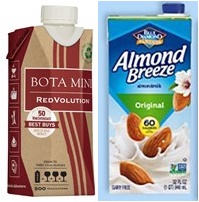All sorts of beverages and other products come in aluminum containers. Aluminum is lightweight, stackable, and theoretically infinitely recyclable. An aluminum container will chill quicker than a glass bottle and retain its chill longer.
Craft beer certainly made a quick move from glass to aluminum cans.
Wine, however, is a lot more traditional with heavy glass bottles, corks, and foils. Not too long ago there was lead in your wine bottle foil that extended right over the opening of the bottle!
 |
| From CCL Container, a 100% aluminum 750 ml wine bottle |
The problems with glass bottles:
Bottles are heavy, making them difficult to move around. A case of wine weighs about 40 lbs, 31 lbs of that is glass. Wine is expensive to ship because of the weight, and shipping requires a lot of packaging material because the bottles are prone to breakage.
The carbon footprint of a winery is largely from its use of glass bottles.
The U.S. does a poor job of recycling glass. Some other countries do much better. This works best if you reuse glass containers rather than making new glass from old ones.
Light is an issue with wine. Direct sunlight can ruin wine.
Possible issues with aluminum:
Just as aluminum will chill quicker, it will heat up faster. Care will be needed with storage or shipping.
Wineries and companies serving wineries have invested lots of money in bottling lines. I would guess aluminum bottles will not work with current bottling equipment, but I don't know for sure.
 |
| Bota Box & Tetra Pak |
Various paper-based containers are another possible replacement for glass wine bottles, like the Bota Box or Tetra Pak, but neither has the aesthetics a premium wine container should have. Neither will fit on a traditional wine rack that's used in many stores and homes.
If the wine industry is ever going to move past glass, it seems that aluminum is going to be the answer.
No comments:
Post a Comment